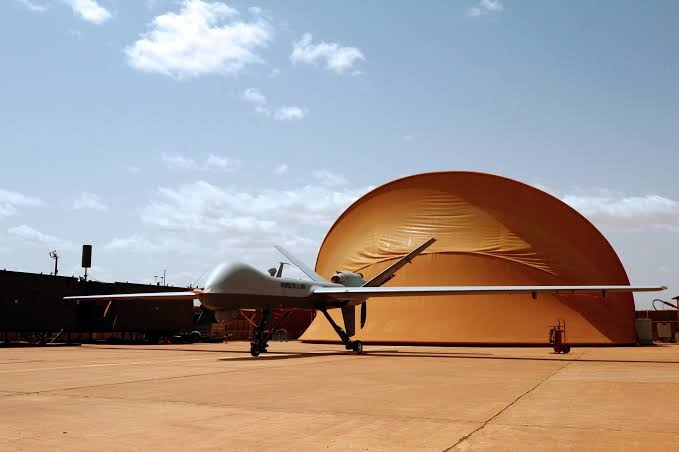The operational dynamics of the U.S. military’s drone program in Nigér have been significantly disrupted following the recent coup that resulted in the closure of the country’s airspace.
The base at the center of this disruption, known as “Nigérien Air Base 201,” was constructed at a considerable cost of $110 million, featuring a 6,200-foot runway tailored to accommodate MQ-9 Reapers and manned aircraft.
Since its inauguration in November 2019, the base has played a pivotal role in the U.S. military’s surveillance and intelligence operations in the region.
With approximately 1,100 U.S. troops presently stationed in Niger, the country serves as a strategic partner in the broader efforts of the U.S. military to counter the activities of the Islamic State group and other terrorist organizations in Africa.
This partnership took on greater significance after the tragic event in October 2017, when four U.S. soldiers lost their lives in an ambush by over 100 ISIS fighters near the Nigérien village of Tongo Tongo.
In 2018, the United States started arming its fleet of MQ-9 Drones stationed in the West African nation of Niger.
The MQ-9 Reapers have sufficient range to strike targets all over West Africa and North African countries, a reality which is unsettling to defense planners in the region.
An MQ-91C Gray Eagle drone operating under the banner of the U.S. Africa Command (AFRICOM) crashed in Agadez, Niger on 29 February.
An AGM-114 Hellfire missile detached during the crash of the MQ-1C drone, was spotted intact on a photograph on social media beside an unknown man.
The closure of the Nigerien airspace following the coup has brought the U.S. military’s drone flights from Nigérien Air Base 201 to an abrupt halt. This development has broader implications, particularly in the fight against violent extremism in North and West Africa. With limited U.S. base presence confined to Djibouti and Niger, losing access to such a strategically vital hub would undoubtedly undermine the collaborative efforts of both U.S. and African forces to combat extremist groups affiliated with Islamic State and Al-Qaeda.
Compounding the situation, the decline in both U.S. and French military presence in the region could potentially create a security vacuum that other actors, like Wagner Group or similar entities, might exploit.
The immediate impact of the airspace closure is the diminished visibility of the U.S. military over the Sahel region of Africa, where the presence of ISIS and al-Qaida’s affiliate, Jama’at Nusrat al-Islam wal-Muslimin (JNIM), is pronounced.
Moreover, the future of the U.S. military’s engagement in Niger remains uncertain in light of the country’s recent political upheaval. The Biden administration has refrained from categorizing the Nigerien military’s actions as a “coup,” a classification that could trigger the cessation of U.S. aid to the nation. Prior to this political turmoil, Niger held a pivotal role as one of the U.S. military’s key allies in Africa for counterterrorism operations.
As events continue to unfold, the implications of the airspace closure, the U.S. military’s future role in Niger, and the broader regional security landscape remain subjects of significant concern and scrutiny. The uncertainty surrounding these developments underscores the delicate balance between combating extremism and navigating complex political dynamics in pursuit of regional stability.


